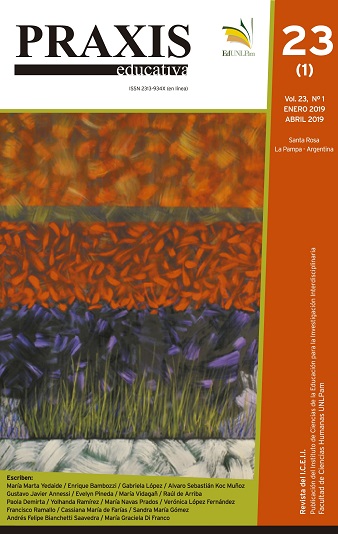Art-based education and political-economic discourse: some examples
Keywords:
art-based education, economic policy, contemporary art, economic problems, innovation in teaching and learningAbstract
This paper analyzes the representation of the economy through contemporary art and, consequently, the educational potential of this particular tool. The work reviews some examples of works by some contemporary artists whose interest focuses on various economic issues of our time. The work explores the possibilities that art offers for the reflection on economic problems.
.Downloads
References
Banksy: (2017) Sin título.Recuperado de www.banksy.co.uk
Cropley, A. J., y Cropley, D. (2008) Resolving the paradoxes of creativity: An extended phase model. Cambridge Journal of Education. Vol. 38(3), 355-373
De Arriba, R. y Vidagañ M. (2014) ¿Hay espacio para el uso del arte en la enseñanza de la economía? Journal for Educators, Teachers and Trainers. Vol. 5(2), 259-271
Dewey, J. (1949) El arte como experiencia. México: FCE.
Dimitri Tsykalov (2004): Plantation à la carte. Recuperado de http://dimitritsykalov.com
Egan, K. (2010) La imaginación: una olvidada caja de herramientas de aprendizaje. Praxis educativa. Vol. 16(14), 12-16
Eisner, E.W. (1995) Educar la visión artística. Madrid: Paidos.
Forsythe, F. (2010) Problem Based Learning. Economics Network The Handbook for Economics Lecturers. (http://www.economicsnetwork.ac.uk/handbook/pbl/)
Gabriele Galimberti y Paolo Woods (2015): The Heavens. Annual Report. Stockport: Dewi Lewis Publishing. Recuperado de www.theheavensllc.com
Jimmy Hickey (2012): Money Man. What have we done. Recuperado de www.jimmyhickey.net
.John Holcroft: (2018) Sin Título. Recuperado de www.johnholcroft.com
Mark Lombardi1999) G. Bull, Space Research Inc. and Armscor. Recuperado de
www.pierogi2000.com/artists/mark-lombardi
The Yes Men (2009): The Yes Men Fix the World. Recuperado de http://theyesmen.org/
Wattsa, M. y Christophera, Ch. (2012) Using Art (Paintings, Drawings, and Engravings) to Teach Economics. Journal of Economic Education. Vol. 43(4), 408-422.
Downloads
Published
Issue
Section
License
Copyright Notice
Editorial Committee Educational Praxis Magazine:
I hereby declare that I am the author of the article titled (article name), that it is original and my own and that it was not previously published in any other format or medium. I declare to know that the magazine will not charge me any type of fee under any circumstances, nor will I receive any type of monetary compensation If it were accepted for publication in Educational Praxis, I authorize the aforementioned magazine to publish it digitally and to advertise it on its social networks.
If the work is published, I adhere to the Creative Commons license called "Attribution - Non-Commercial Share Alike CC BY-NC-SA", through which it is allowed to copy, reproduce, distribute, publicly communicate the work and generate derivative works, as long as when the original author is cited and acknowledged. This license has been used since September 2018. In 2016 CC BY NC ND 4.0 was adhered to; and in the years 2017 and 2018 (January-August) CC BY NC 4.0.
This CC BY-NC-SA Share Alike license does not, however, permit commercial use of the work. As an author, the journal may establish additional agreements for the non-exclusive distribution of the version of the work published in the journal, it allows me to self-archive the published articles, in their post-print version, in institutional, thematic repositories, personal web pages or any other relevant use. with the recognition of having been first published in this journal.
Educational Praxis adheres to DORA (Declaration on Research Assessment) signed in San Francisco, California, on December 16, 2012, and to the Declaration of Mexico (Joint Declaration LATINDEX - REDALYC - CLACSO - IBICT).











_(1)2.png)


3.png)











_(2).png)






2.jpg)









